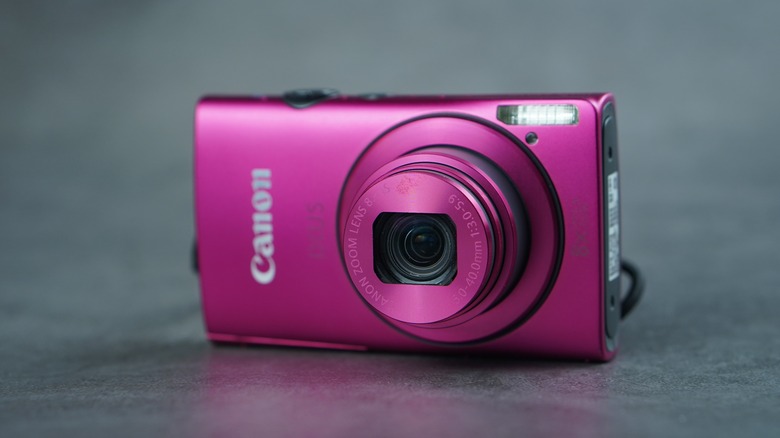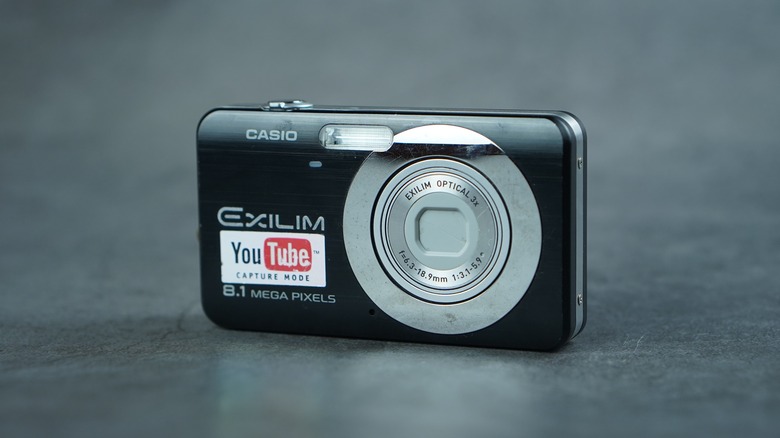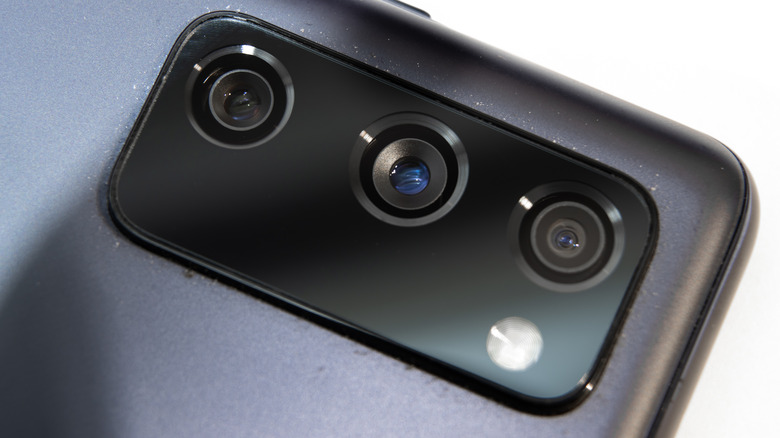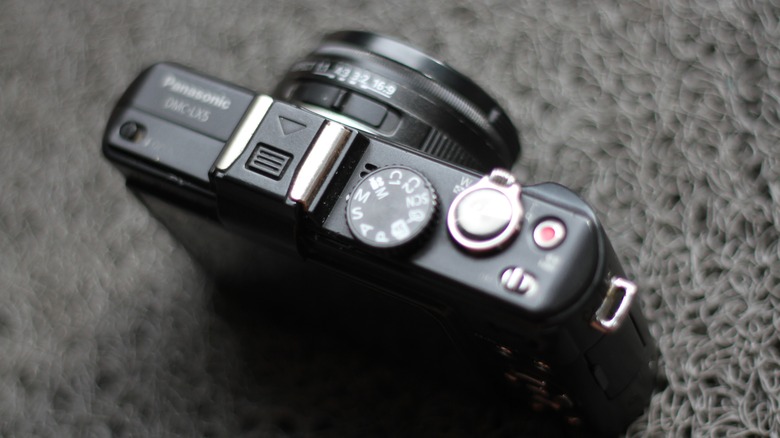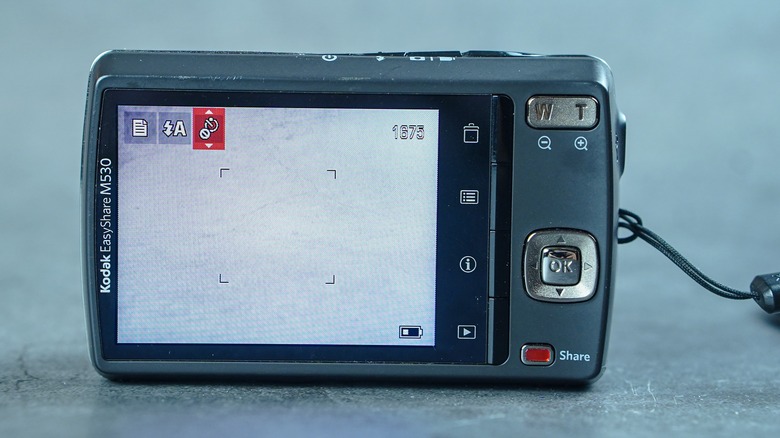Why The CCD Sensors In Vintage Digital Cameras Are So Popular (And How They Work)
At the start of the century, it was unthinkable that people would walk around with a pocket-sized camera. But today, we take the ubiquity of photographic equipment for granted. Smartphone cameras have become so good relative to their size that, even when far more expensive and professional equipment is available, serious photographers and filmmakers still use them. But vintage cameras are making an inexplicable comeback among young people. Old digital cameras are a TikTok craze, and those participating in it are gravitating toward CCD sensors in particular.
CCD technology was the driving force behind early digital photography, and its popularity persisted until the late 2000s. Advances in photographic sensors and display technology led to the rise of the flatscreen TV and the smartphone, leaving CCD cameras firmly in the past. Today, people are digging back into that past with gusto, so it's worth asking, did we leave it behind too hastily? Just what is it about these vintage cameras that has people so hooked, and what can we learn from their renewed popularity?
As it turns out, the history of digital photography is also the story of the 21st century thus far. The rise and fall of the CCD sensor mirrored a paradigm shift in our lives as we sought new, pocket-sized technologies that could keep up with our increasing connection to the digital world. In many ways, the CCD camera craze is a countercultural current that speaks to deeper anxieties. It's also a reason to nerd out about camera technology. So, let's explore the history of digital photography, what CCD technology is, and why people are still seeking it out in 2024.
A brief history of CCD sensor cameras
The most difficult thing about photography is capturing the smallest slice of time possible. That's because the real world doesn't work in terms of frame rates. Capturing light that's moving far faster than our eyes can detect isn't easy, and even the quickest shutters aren't producing images that represent a memory, but rather a very brief period of it. That's why sensor technologies matter. We've come a long way from the box cameras of the 1800s that required people to sit still for more than 20 seconds at a time, but even the most modern digital shutters and sensors capture life in stills easier, only in much faster. So, how did we get here?
In the late 1960s, physicists George E. Smith and Willard Boyle were hard at work in the bowels of Bell Labs, experimenting on what would become the future of photography. In 1969, they patented the charge-coupled device, or CCD. Initially intended to be a memory chip, they realized that it didn't store information as intended. What it did do was convert light into an electrical charge, making it the first form of digital photography. The CCD worked by exposing a grid of photosensitive pixels arrayed on a chip to light, converting the light to electrons, and the electrons to voltage information that could be interpreted by a computer.
However, the CCD was eventually usurped by CMOS (complementary metal-oxide semiconductor) sensors, which are not only far more energy-efficient but can operate much faster. These are the sensors you'll find not only on smartphone cameras, but even on high-end shooters like Canon's EOS Digital Rebel line. So, why are people suddenly gravitating back to older, less efficient, and slower CCD cameras?
The revival of CCD cameras feels like a regression
With the advent of the smartphone and flatscreen TVs, most people assumed CCD sensors were going the way of the Dodo. But today, vintage digital cameras of the sort you might remember taking on vacation in the early 2000s are all the rage once more. It's a strange development, not only because the camera in your smartphone almost certainly takes better pictures than the old Olympus or Kodak you found at a garage sale, because CCD technology is fundamentally at odds with how we now experience digital media.
There's a good reason why CCD cameras were replaced by CMOS at the same time as flatscreen TVs replaced tube televisions. The way we display images fundamentally changed, and so the way we took images needed to adapt to those new displays. Tube TVs displayed interlaced footage, meaning half the horizontal lines on the screen displayed one frame as the other half rendered a second one. Because of this, frame rates were expressed in interlaced numbers such as On the other hand, flatscreen TVs use progressive scan technology that displays uniform images in whole frame rates. Movies today are typically 24 FPS (a holdover from the film era), while TV shows on streaming are usually 30 or 60 FPS.
Clearly, all of that matters a bit less with still images, but hold an old CCD camera up alongside your new iPhone 16 Pro and the latter will take a photo so much better it's almost comical. And old film cameras are making a comeback, which take much better photos. So, again, why are people suddenly obsessed with cheap CCD photography in the mid-2020s?
The technical advantages of CCD photography
To understand the current hype around vintage CCD cameras, we have to look at the few technical benefits they do hold over CMOS sensor cameras. The differences boil down to lighting and stability. Modern smartphone manufacturers have gone to great length to make CMOS sensors perform well even when they're not stabilized or are operated in poor lighting conditions, but those were obstacles to be overcome due to the way CMOS operates.
A CMOS shutter is rolling, meaning that each horizontal line of pixels in a CMOS array captures light operates independently, capturing light and passing it down to the converter. A CCD sensor, on the other hand, is global, meaning the entire array captures light at once, then takes a period of time to reset. While this isn't ideal for modern videography, it has advantages for still photography. Notably, CCD photos tend to have better light sensitivity and less noise than a CMOS photograph. Whereas modern smartphones use computational photography to make low light shots look brighter, CCDs will naturally capture more light in such environments, no post-processing needed. And whereas CMOS photographs get grainy and noisy in low light, CCD photographs tend to have comparatively less noise in most environments.
The biggest drawback to CCD is its relative inefficiency. CCDs can draw up to 100 times more power than a CMOS sensor of similar quality, which is why smartphone manufacturers preferCMOS. But for those willing to tote a dedicated camera around, there are great CCD cameras just waiting to be plucked from pawn shop shelves or from an eBay storefront. All of this goes a long way to explain the newfound popularity of those older cameras.
Cord-cutters and sentimental types are leading the vintage CCD craze
By now, we've established what CCD sensors are, what their strengths and weaknesses are relative to newer CMOS cameras, and why someone might prefer them on a technical level. But none of that explains why TikTok teens are head over heels for some of the lousiest CCD cameras of all time. It's not that there were never competent CCD cameras. After all, it was the gold standard of digital photography for years, and many high-end CCD cameras hit the market. So, why are teenagers collecting point-and-shoot cameras that were always best known for giving their subjects a potent case of red-eye?
According to many of those participating in the craze, the goal isn't photographic fidelity but rather the nostalgia evoked by the cheap cameras of a bygone era. They're the kind of point-and-shoots you could buy at Walmart or Circuit City 20 or so years ago. A great number of people — especially from Gen-Z —have family photos shot on those crummy cameras. For the millennial crowd, old and cheap CCD cameras evoke memories of poorly lit photos from their first college party. To put it in the parlance of TikTok, CCD photos are a vibe, and perhaps the perfect way to document a brat summer.
Another common rationale for grabbing a cheap, old CCD camera is cord-cutting. Many people are increasingly irritated by the centrality of smartphones in our lives, so leaving the phone at home, or even keeping it pocketed more often, is a compelling reason to carry a dedicated camera. Those photos can't be immediately shared to Instagram Stories, and in that, there's a strange kind of freedom.
